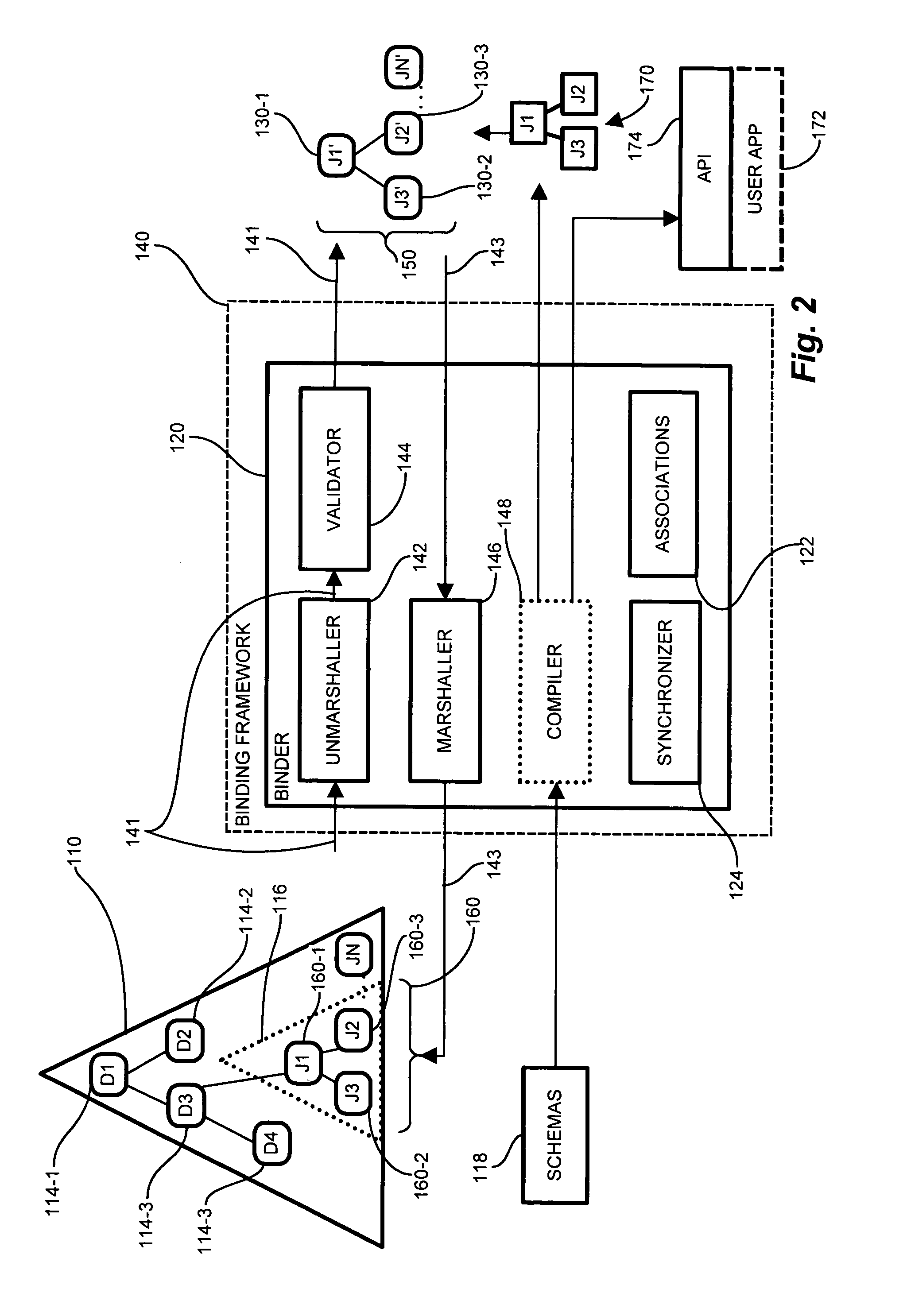System and method for maintaining alternate object views
a technology of object views and schemas, applied in the field of software development environment, can solve the problems of difficult to understand the xml format presented by the schema, the difficulty of maintaining the schema, and the conflict between ease of use and function robustness, so as to avoid overwriting or “clobbering
- Summary
- Abstract
- Description
- Claims
- Application Information
AI Technical Summary
Benefits of technology
Problems solved by technology
Method used
Image
Examples
Embodiment Construction
[0032]Configurations disclosed herein provide a binding framework including a binder operable to associate and synchronize particular document objects with corresponding content objects. An unmarshalling operation generates the content objects from the XML documents. The content objects, which may in particular configurations be JAXB content objects, provide an alternate view to the XML data contained in the underlying XML documents. Java (i.e. user) applications then modify, or update the content objects via the alternate view, and rewrite, or update, the corresponding XML document during a marshalling process (i.e. writing the data from Java back into XML). The binding framework maintains the associations such that bound content objects are modifiable and may update the corresponding XML data in a non-destructive manner which avoids overwriting other preexisting data contained in the XML document object during marshalling. The synchronizer employs the associations to maintain runt...
PUM
 Login to View More
Login to View More Abstract
Description
Claims
Application Information
 Login to View More
Login to View More - R&D
- Intellectual Property
- Life Sciences
- Materials
- Tech Scout
- Unparalleled Data Quality
- Higher Quality Content
- 60% Fewer Hallucinations
Browse by: Latest US Patents, China's latest patents, Technical Efficacy Thesaurus, Application Domain, Technology Topic, Popular Technical Reports.
© 2025 PatSnap. All rights reserved.Legal|Privacy policy|Modern Slavery Act Transparency Statement|Sitemap|About US| Contact US: help@patsnap.com



